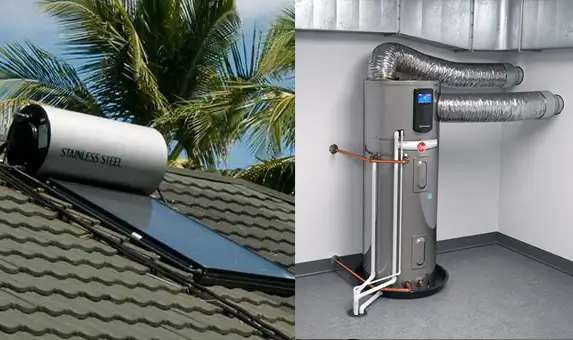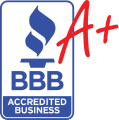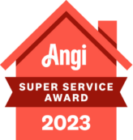Clogged sinks are a nuisance no Hawaiian homeowner wants to deal with. When water refuses to drain from your kitchen or bathroom sink, daily routines quickly become disrupted. Our islands’ tropical climate and volcanic soil can actually increase the risk of sink clogs due to aggressive plant root growth and mineral buildup over time.
While an occasional clogged sink is common, catching it early and taking proper action is key to avoiding a bigger plumbing nightmare. This blog post covers the typical culprits behind sink clogs here in Hawaii, the red flags that signal a more serious obstruction is forming, and effective techniques – from DIY home remedies to professional hydrojetting – to get your drains flowing freely again.
A little practical knowledge about sink clogs, along with consistent preventative maintenance, allows you to stay ahead of these plumbing problems. Don’t let an initially small clog escalate into a major household headache and potential water damage. Stay proactive about clearing sink obstructions to keep your kitchen and bathrooms running smoothly all year long.
Common Causes of Toilet Clogs
While a clogged toilet is an unpleasant scenario no homeowner wants to face, knowing the common culprits can help prevent these backups from occurring. From flushing the wrong items down to hard water buildup, let’s look at the typical causes behind stubborn toilet clogs in Hawaii.
Too Much Toilet Paper
While toilet paper is designed to dissolve in water, using an excessive amount can overwhelm the flushing system. The sheer volume of paper fails to break apart fully before reaching bends in the drain line. As it compacts, it creates a solid, dense mass that gets stuck and obstructs flow.
Even supposedly “plush” and “luxurious” toilet paper brands don’t always break down as readily as you’d expect. To avoid this cause of clogs, stick to using just the recommended amount of toilet paper per flush and choose a quality brand designed for rapid dissolution.
Flushing Non-Flushable Items
From the convenience of disposable wipes to feminine hygiene products, the bathroom tends to contain quite a few objects that may seem flushable but absolutely should not be. Despite being designed to break apart when submerged in water, these items don’t disintegrate effectively enough to make it through a household plumbing system.
Wipes, tampon applicators, cotton balls, and even dental floss can clump together into a tangled, fibrous mass that snags on pipe interiors and creates a total blockage. Make sure to dispose of all non-dissolving personal care products properly in the trash.
Low-Flow Toilets
While low-flow toilets provide significant water conservation benefits, the lower flush volume can sometimes struggle to fully clear waste from the drain lines, especially with longer runs or multiple bends.
Older low-flow models may use as little as 1.6 gallons per flush, compared to 3-5 gallons for standard toilets. This lower water pressure can leave behind more solid matter and toilet paper that gradually accumulates into a clog. Upgrading to newer EPA WaterSense certified low-flow models with higher pressure helps mitigate this issue.
Hard Water Deposits
Hawaii’s volcanic geology results in water sources containing higher mineral content like calcium and magnesium. As this “hard” water passes through toilet components over time, these minerals can leave thick, crusty deposits along interior surfaces.
The buildup narrows drain openings, catches debris, and eventually creates stubborn clogs. Hard water scale also accumulates within the toilet’s internal flushing mechanisms, degrading performance. Using a preventative hard water toilet cleaner and considering water softening can minimize this mineral buildup.
Blocked Toilet Trap
The curved trap located beneath the toilet bowl serves an important purpose – it captures a small amount of water to form an air seal against sewer gases entering the bathroom. However, this u-shaped trap section can also become blocked by objects that get flushed and become lodged there.
Children’s toys, dropped items, and solid waste matter can easily snag and clog the trap if not cleared quickly. Attempting to dislodge items with a plunger or drain snake provides a simple way to clear trap obstructions.
Sewer Line Problems
If you notice multiple toilets and drains frequently clogging, it may point to a larger obstruction within your home’s main sewer line. Invasive tree roots can penetrate pipe joints over time and create blockages as they thicken.
Cracked, collapsed or “bellied” sections of the sewer line can also catch debris and restrict flow. Scheduling regular video inspections allows you to identify and address these deep sewer line issues before they contribute to recurring toilet backups throughout the home.
Toilet clogs from any of these causes create an unpleasant, unsanitary situation for homeowners. Take preventative steps where possible and call for professional assistance if sluggish flushing persists. Avoiding potential overflows is always preferable to dealing with a major toilet disaster!
Diagnosing Toilet Clogs
A clogged toilet is certainly a nuisance, but figuring out the root cause is critical before you can properly clear the obstruction and prevent future backups. There are a couple key ways to diagnose persistent toilet clogs:
Visual Inspection
Sometimes the easiest first step is a simple visual check of the clogged toilet itself. Take off the tank lid and flush – if the water level keeps rising towards overflowing, you likely have a serious blockage in the drain line. Shine a flashlight into the bowl and see if you spot any obvious stuck objects or waste buildup preventing full drainage.
For a closer look, you can remove the whole toilet and visually inspect the trap area underneath for clogs. If other fixtures like showers or tubs are gurgling or draining slowly too, that signals the blockage extends beyond just the toilet into main drain pipes.
Check around the toilet base for any damp spots that could indicate a leak. And give the basement or yard a check for sewer backup signs like odors, water stains or mold growth that can help locate the clogged area.
Professional Diagnosis
When toilet clogs prove particularly stubborn, you may need professional diagnostic tools to identify and locate the obstruction within the plumbing system. Plumbers use specialized cameras to inspect all the way through toilet drains into the main sewer line.
These video inspections reveal clogged areas but also crucial information like pipe condition, roots, misalignments or deterioration that could be contributing factors. Other techniques like smoke testing isolate the clog location.
With thorough professional diagnosis, you avoid guesswork and get a targeted, effective approach to your toilet clog – whether that means DIY fixes, scheduling a plumbing service or making needed repairs. Don’t let a mystery clog turn into a much bigger mess! Get an expert opinion first.
DIY Solutions for Toilet Clogs
When a toilet clog strikes, many homeowners first attempt some DIY unclogging methods before calling in reinforcements. Trying simple solutions can potentially dislodge the obstruction and get your toilet flushing freely again. Just be cautious of avoiding excessive force which could potentially damage plumbing pipes and fittings. Here are some common DIY fixes for toilet clogs:
Using a Plunger
The classic rubber plunger is a go-to tool for an initial attempt at clearing minor toilet clogs. Make sure to use a proper flange-style plunger meant for toilets, not the cup-shaped sink variety. Run enough water into the bowl to cover the plunger’s rim, then forcefully plunge up and down to build suction and dislodge the blockage. Don’t be afraid to put some muscle into it, while avoiding any splashback. Work the plunger rigorously for a couple minutes before taking a break to let water levels equalize.
Enzyme-Based Drain Cleaners
For softer, organic obstructions like accumulated paper and waste, enzymatic bioactive drain cleaners can provide a gentle but effective clog removal solution. Look for products containing a blend of natural bacteria and enzyme cultures that work to rapidly break down and dissolve stuck-on gunk. Pour the recommended amount into the toilet and let it work for several hours before flushing again. Avoid using caustic chemical drain cleaners which could potentially damage your plumbing system.
Plumbing Snake or Auger
If plunging fails to dislodge the clog, your next DIY option is physically snaking the toilet drain with a plumber’s auger. Carefully feed the auger cable into the toilet, twisting it down until you encounter resistance from the blockage. Crank the auger to work through and grab hold of the clog, then gradually reverse the auger out while continuing to turn and capture the obstruction.
Hot Water and Dish Soap
Sometimes a simple homemade solution can do the trick for very minor toilet clogs. Heat a pot of water just until steaming, then carefully pour it into the toilet bowl. The heat can help dissolve and loosen gunk while the water pressure helps flush it through. Follow up by squirting a few generous dollops of liquid dish soap into the water, letting it work for 20-30 minutes before flushing. The mild detergents can provide extra lubrication to help slip by the clog.
These DIY fixes are certainly worth trying first on clogged toilets. But it’s crucial to avoid causing any undue pressure that could potentially crack or break toilet components and plumbing pipes. If the clog still persists after a few reasonable attempts, that’s the sign to swallow your DIY pride and call in a professional plumber who has the proper tools and expertise to safely and effectively clear that stubborn toilet obstruction.
Preventing Future Toilet Clogs
Once you’ve dealt with an aggravating clogged toilet, the last thing you want is to repeat that whole messy scenario. A little preventative care and some adjustments to your bathroom habits can make a huge difference in keeping toilet clogs at bay long-term.
Proper Flushing Habits
Be mindful of what actually gets flushed down the toilet. Despite marketing claims, items like disinfecting wipes, feminine products, and some thicker toilet papers just don’t break down well enough to make it safely through plumbing. Stick to only flushing human waste and rapid-dissolving toilet paper specifically designed for sewers and septic systems.
It’s also important to flush thoroughly, especially with low-flow toilets. Giving a solid, complete flush ensures you get maximum water volume and pressure to clear everything out properly. For bigger jobs, don’t be shy about an extra courtesy flush partway through.
Regular Maintenance
Make toilet cleaning and maintenance part of your regular routine. Using a toilet brush frequently prevents excessive grime buildup in the bowl and along the drain path. Every few months, run an enzymatic or mild abrasive cleaner through to clear away any potential obstructions before they become an issue.
Checking for minor leaks around the toilet base, tank fittings or supply line can also prevent those small drips from potentially causing bigger clogs down the road.
Upgrading Your Toilet
If you have an older low-flow toilet model from before 1994, upgrading can make a major difference in flushing power while still saving water. Look for WaterSense certified high-efficiency toilets that optimize flush performance. Choosing a 3″ flush valve over standard 2″ also increases drain clearing capability.
For problem-prone homes, toilets with fully-glazed internal trapways prevent gunk and residue accumulation that leads to clogs.
Hard Water Issues
Hawaii’s hard water sources can leave mineral deposits inside toilet components over time, obstructing waterways. Installing a water softener system or using a hard water toilet cleaner product minimizes this buildup.
Staying on top of preventative measures like these ensures your toilet flushes reliably long-term with way less hassle and risk of overflows. A few minor adjustments beat dealing with a backed-up, water-damaged bathroom any day!
The Role of Plumbing System Design
While flushing habits and maintenance certainly play a role, the actual design and condition of your home’s plumbing itself can contribute to frequent toilet clogs too. Outdated or improperly installed components make drainage more difficult over time.
Pipe Diameter and Slope
The diameter of your drain pipes along with their slope angle impacts how well waste and water can flow out. Pipes that are too narrow restrict flow and make it easier for gunk to get stuck. Proper downward sloping is key too – even a small upward tilt or sagging section creates an instant trap for debris buildup.
During construction or renovations, make sure plumbers use properly sized 3″ or 4″ drain pipes at the right pitch to prevent drainage issues down the road. For existing homes, camera inspections spot any problem areas needing repair or re-piping.
Venting Issues
Adequate air venting is crucial too. Without it, air pressure gets trapped in drain lines, blocking water flow and causing slow drains, gurgling and clogs. Adding a new bathroom or fixtures? Confirm new vent pipes get tied in for balanced airflow. On older homes, blocked or deteriorated vents may need clearing or replacing.
Older Plumbing Systems
Overall pipe age and condition is also a factor. Cast iron from the 50s-60s was prone to corrosion. Pre-1960s homes likely still have lead or cracked clay pipes allowing debris in easily. While an investment, replacing these outdated materials with modern PVC/PEX pipes pays off by drastically reducing clogs long-term.
The design and underlying plumbing skeleton impacts your toilet’s performance more than you think. Keeping up with repairs and upgrades prevents the system design from working against you with constant backups. Plan ahead now to flush those worries away!
Avoid the Nightmare of Clogged Toilets
Nobody wants to deal with a clogged toilet creating a huge mess and headache. But being proactive with some simple preventative measures lets you stay ahead of these plumbing problems.
From being mindful of what actually gets flushed down to keeping up with routine toilet maintenance, a few adjustments can stop minor clogs before they turn into full-blown backups. Upgrading to a newer high-efficiency toilet model optimized for clog resistance offers an easy long-term solution too.
If you do wind up with a stubborn clog, basic DIY methods like plunging, drain snakes, and enzyme treatments are worth a try first – just avoid harsh chemical products that could potentially damage pipes further.
But when clogs persist or seem tied to larger issues with aging plumbing or improper venting, that’s the sign you need professional assistance. A reputable local plumber has the specialized tools and expertise to accurately diagnose pipe problems and clear even the toughest toilet obstructions safely.
For longstanding plumbing expertise here in Hawaii, homeowners have turned to companies like Steve’s Plumbing & AC for over 35 years. Our team intimately understands the challenges our island’s environment poses for residential and commercial plumbing systems. From basic repairs to full repiping, you can count on experienced service that solves the real underlying issues.
Don’t let a minor clogged toilet spiral into an emergency situation. Stay proactive and know when it’s time to call in qualified plumbers who can get your drains flowing freely again quickly. Avoid that nightmare scenario with the right preventative steps and professional help! Call Steve’s Plumbing for pluming help today at (808) 563-4054!











